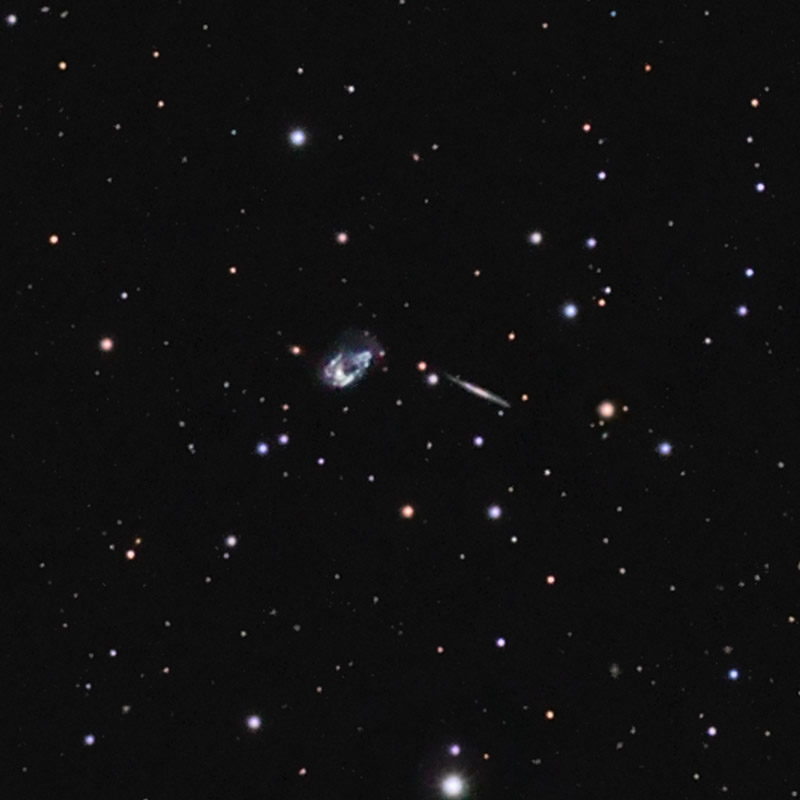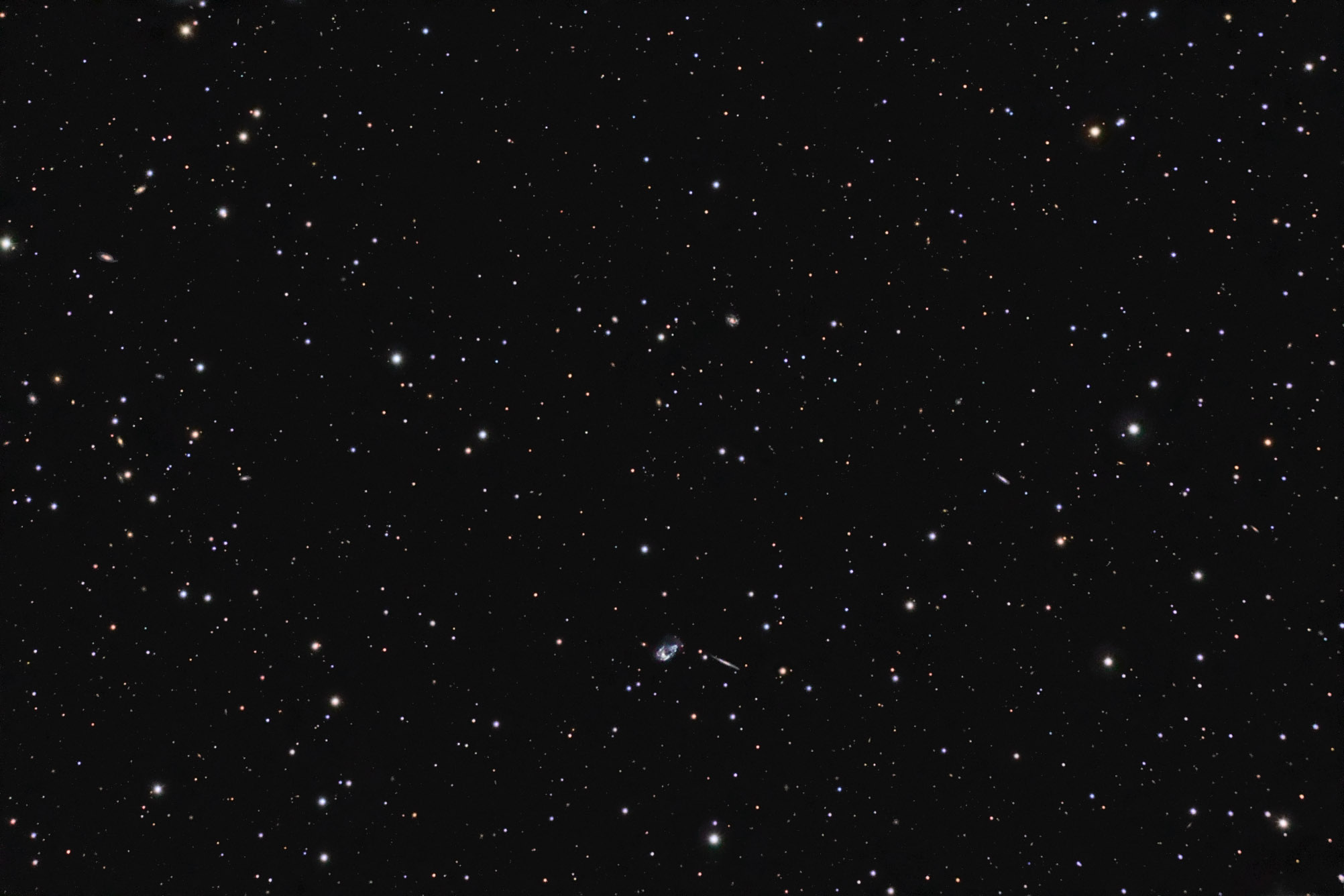| Description | Images |
Object name: ARP208Designation(s): ARP208, Arp 208, also known as CGCG 252-007, is a pair of interacting galaxies a bit over 400 million light-years away seen against northern Hercules. Redshift data is available only for the eastern galaxy. Arp classed this pair under: Galaxies (not classifiable as S or E), material ejected from nuclei. We now know what he was seeing were pieces tidally pulled from these galaxies rather than ejected. Individually they are cataloged as MCG+08-31-010 and MCG+08-31-011, left to right. The Kanipe-Webb book though has them reversed. While that does fit normal RA ordering it doesn't match any of the catalogs I consulted. There's no consensus on how to classify these two. Most either don't try or say S?. VV catalog calls both irregular. The edge on nearby is MCG+08-31-09, an Sd spiral with the same redshift as Arp 208 so a nearby member. Arp had no comment on this entry and I find little useful on it in the literature. CGCG catalog considers this a 3 galaxy system with the note: "Triple system [with] bridges." I don't see any sign of a bridge to the edge on spiral. NED lists the western part (MCG+08-31-11) as being a rejected quasar rather than a galaxy. Gives a photometric distance of 7 billion light-years and a brightness of 20.9. That's very strange series of what appears to be mistakes. Related Designation(s):ARP 208, ARP208, CGCG 1649.6+4718, CGCG 252-007, IRAS 16496+4718, IRAS F16496+4718, VV 271, | Permanent link: https://images.mantrapskies.com/catalog/ARP-GALAXIES/ARP208/ARP208L4X10RGB2X10X3-ID.JPG |


